Improve Your Lacrosse Game With the Right Arm and Elbow PadsImprove Your Lacrosse Game With the Right Arm and Elbow Pads
Choose Pads Based on Your Lacrosse Position
As a lacrosse player, choosing the right arm and elbow pads is crucial for maximizing protection and performance. The pads you select should be tailored to your specific position on the field – attack, midfield, defense, or goalie. Attack and midfield players who handle the ball frequently need pads with more flexibility and mobility. Bulkier pads with maximum protection will slow you down on quick dodges or shots. Focus on lightweight, low-profile pads that still protect the forearm and elbow from checks and slashes.
Defensemen dish out physical play and need extra padding on the arms from high speed ball impacts. Look for thick, durable pads with molded plastic caps and plates over the elbows and wrists. Added padding on the outside forearms will also help absorb slashes. For goalies, specialized elbow pads provide padded extensions to shield the biceps and outside of the arms. Since goalies can’t use their sticks to block shots, extra coverage on the arms is essential. Forearm pads also help goalies when diving to make saves. Evaluate if you need extra spine protection as well to shield against close-range shots.
Within each position, also consider your style of play and needs. Bigger players may want more shock absorbing padding to withstand contact. Faster players need lighter, flexible pads for quicker movement. Always try pads on with your helmet and shoulder pads to test the fit. Getting pads sized correctly is vital so they don’t slide around or leave gaps during play. With the right lacrosse arm and elbow pads for your position, you’ll have the protection and mobility to take your game to the next level.
Focus on Fit and Comfort
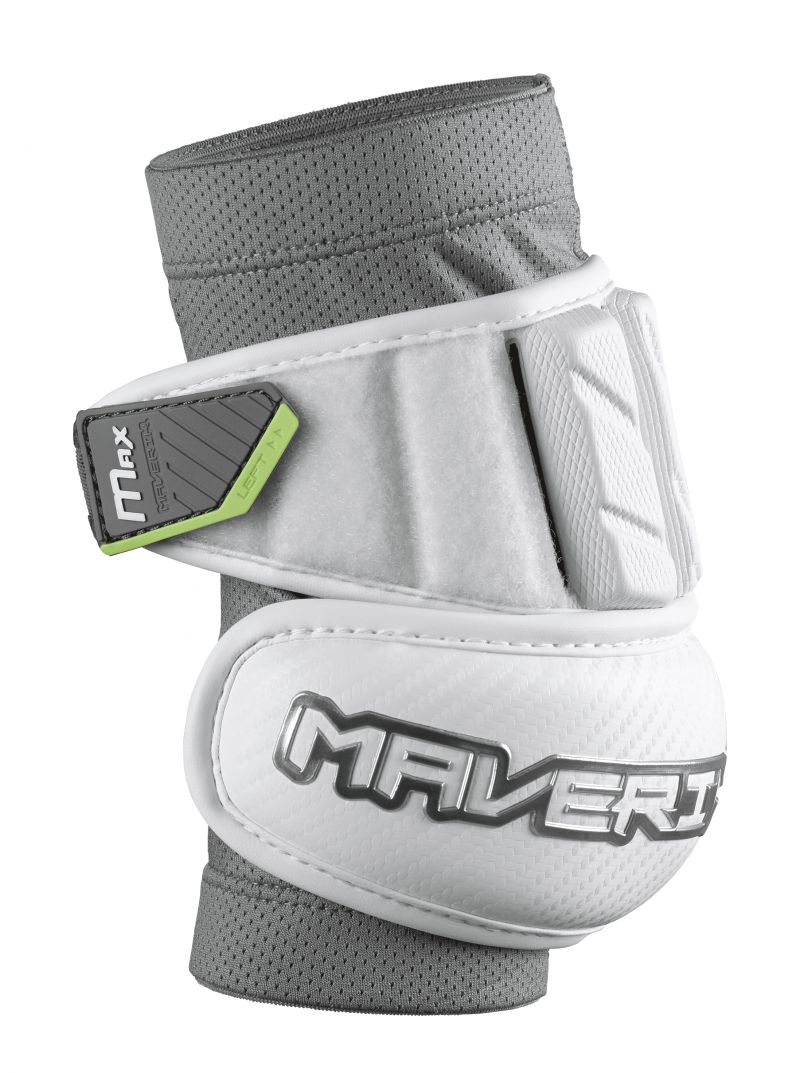
Finding lacrosse arm pads that fit comfortably is crucial for optimal performance. Pads that are too loose or too restrictive will negatively impact your game. When trying on arm pads, first check that they conform correctly to the shape of your arms without any gaps. The pads should fit snugly but not dig into your muscles or cut off circulation. Flex your elbows and move your arms in all directions to ensure a full range of motion is possible without the pads sliding around or moving out of place.
Ideal lacrosse arm pads will feel like a natural extension of your body, moving fluidly as you cradle, pass, and shoot. Determine if you want pads with adjustable strapping to customize the compression. Many pads utilize Velcro straps that allow you to control the tightness. Goalies in particular need their arm pads secured firmly so they don’t shift on impact. Attackmen and midfielders often prefer a looser fit for faster movements. Consider how much weight you want as well. Bulky and thick pads will provide more protection but can fatigue your arms more quickly. Newer lightweight pad materials offer robust protection without excessive weight.
Finding the right balance of snugness, flexibility, and weight in your arm pads is key. The pads should not pinch, slip, or rub painfully on your skin. Quality padding materials will wick away sweat to keep you cooler and drier during intense gameplay. Prioritize ventilation features like mesh underlays and perforated padding. Before purchasing new lacrosse arm pads, read reviews and get input from other players on the most comfortable options. With arm pads that fit your body type and needs, you’ll be able to perform at your best.
Prioritize Protection on Key Impact Zones
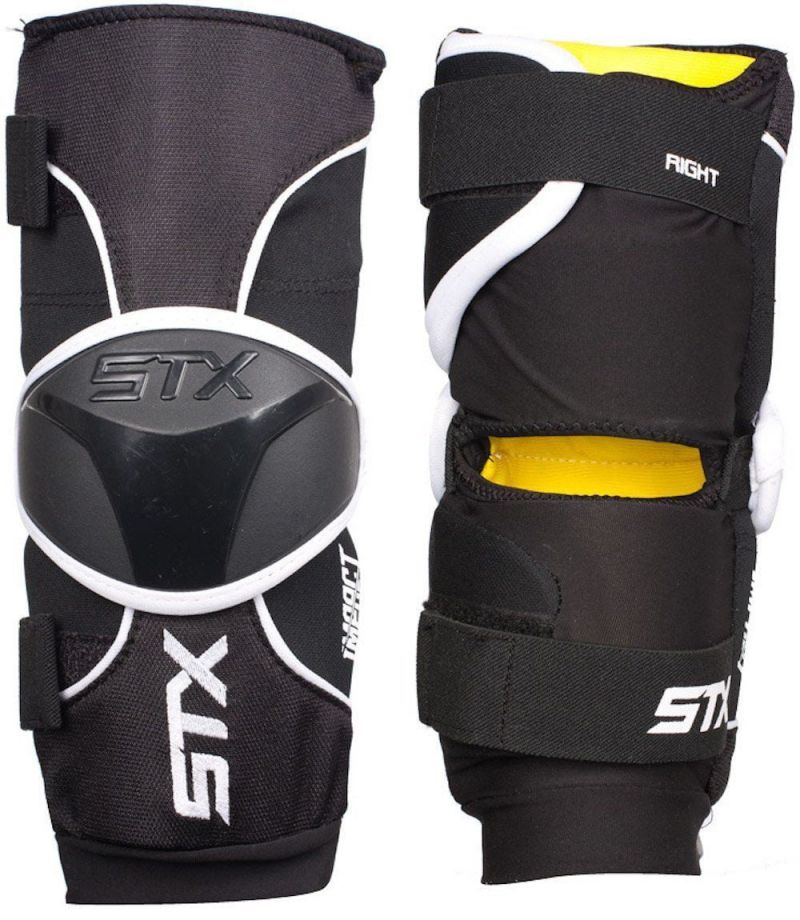
When selecting lacrosse arm pads, prioritizing protection on the zones most vulnerable to checks and hits is crucial. The main impact areas to focus on protecting are the elbows, forearms, and wrists. These sections of your arms will take the brunt of slashes, poke checks, and errant shots. Look for arm pads with molded plastic caps that encase and shield the elbow joint. This exterior hard shell will distribute and absorb shock from direct blows. Underneath the caps, there should be thick foam or padding to further protect the elbow.
Extra padding on the outside and inside of the forearms will also help deflect routine slashes and cross-checks. Many pads incorporate removable or adjustable sleeves to customize forearm protection. Make sure to protect the wrists as well with extended cuffs and padding over this sensitive joint. Goalies in particular need reinforced wrist guards to prevent injury when blocking close-range shots.
At the same time, don’t overlook protecting your biceps and triceps with arm pad designs that extend higher up on your arms. Vital nerves and blood vessels run through these areas which are vulnerable to bruising from checks. While you want padding in the key zones, avoid arm pads that are overly bulky all over. This can restrict your movement and feel clumsy. Finding the ideal lacrosse arm pads means getting comprehensive protection right where you need it most.
Consider Mobility and Flexibility
- Choose pads with thick, durable construction
- Look for molded plastic caps over elbows and wrists
- Prioritize additional padding on the outside forearms to absorb slashes
Goalie: Specialized Coverage for Shot-Blocking
Goalies require specialized arm and elbow pads that offer extended protection. Since they can’t use their sticks to block shots, comprehensive arm coverage is essential.
- Seek pads with padded extensions to shield biceps and outer arms
- Consider options with additional spine protection for close-range shots
- Look for forearm pads that provide cushioning for diving saves
Achieving the Perfect Fit: Comfort Meets Performance
The fit of your lacrosse arm and elbow pads plays a crucial role in your overall performance. Ill-fitting pads can hinder movement, cause discomfort, and ultimately detract from your game.
Conforming to Your Body
Ideal lacrosse arm pads should feel like a natural extension of your body. When trying on pads, pay attention to how they conform to the shape of your arms.

- Ensure there are no gaps between the pad and your arm
- Check for a snug fit that doesn’t restrict circulation or dig into muscles
- Test your full range of motion to ensure the pads don’t slide or shift
Customizable Compression
Many modern lacrosse arm pads offer adjustable strapping systems, allowing players to fine-tune the fit to their preferences.
- Consider pads with Velcro straps for easy adjustments
- Goalies may prefer a tighter fit to prevent shifting on impact
- Attackmen and midfielders might opt for a slightly looser fit for quicker movements
Weight and Material Considerations
The weight and material of your arm pads can significantly impact your comfort and endurance during gameplay.
- Evaluate the trade-off between protection and weight
- Look for pads with moisture-wicking properties to keep you cool and dry
- Prioritize ventilation features like mesh underlays and perforated padding
Targeting Key Impact Zones: Strategic Protection
When selecting lacrosse arm pads, it’s crucial to focus on protecting the areas most vulnerable to impacts and checks. Understanding these key zones will help you choose pads that offer optimal protection where you need it most.

Elbow Protection: The Cornerstone of Arm Pads
The elbow is one of the most critical areas to protect in lacrosse. It’s a joint that’s particularly vulnerable to impacts and can significantly affect your ability to play if injured.
- Look for pads with molded plastic caps that encase the elbow joint
- Ensure there’s thick foam or padding underneath the caps for shock absorption
- Check that the elbow protection doesn’t restrict your ability to bend and straighten your arm
Forearm Guards: Shielding Against Slashes
The forearms are prime targets for slashes and cross-checks in lacrosse. Adequate protection in this area is essential for all players, but especially for those in defensive positions.
- Seek pads with extra padding on both the inside and outside of the forearms
- Consider options with removable or adjustable forearm sleeves for customizable protection
- Ensure the forearm guards extend far enough to cover the entire area from elbow to wrist
Wrist Protection: Guarding a Vulnerable Joint
The wrists are another crucial area that requires protection, particularly for goalies who use their arms to block shots.

- Look for pads with extended cuffs that cover the wrist joint
- Consider reinforced wrist guards, especially if you’re a goalie
- Ensure wrist protection doesn’t impede your ability to cradle or pass the ball
Balancing Protection and Mobility: The Key to Peak Performance
Finding the right balance between protection and mobility is crucial for maximizing your performance on the lacrosse field. While robust protection is important, it shouldn’t come at the cost of your agility and speed.
Flexibility in Design
Modern lacrosse arm pads often incorporate flexible materials and articulated designs to allow for natural movement.
- Look for pads with segmented or jointed sections that move with your arm
- Consider pads made with stretchy, breathable fabrics that conform to your movements
- Test the pads’ flexibility by mimicking lacrosse-specific movements like cradling and shooting
Strategic Padding Placement
The placement of padding can significantly impact both protection and mobility. Opt for designs that concentrate protection where it’s needed most while minimizing bulk in other areas.

- Choose pads with reinforced protection on impact zones like elbows and outer forearms
- Look for designs that use lighter, more flexible materials in less vulnerable areas
- Consider pads with removable inserts that allow you to customize protection based on your needs
Material Innovations: Enhancing Performance and Comfort
The materials used in lacrosse arm and elbow pads have come a long way in recent years, offering players enhanced protection, comfort, and performance.
High-Tech Foam and Padding
Advanced foam technologies have revolutionized the way lacrosse arm pads absorb and distribute impact.
- Look for pads featuring D3O or similar smart materials that harden on impact
- Consider options with dual-density foam for a combination of softness and impact resistance
- Explore pads with memory foam inserts for personalized comfort
Moisture Management and Breathability
Staying cool and dry during intense gameplay is crucial for maintaining peak performance.
- Opt for pads with moisture-wicking liners to keep sweat away from your skin
- Look for designs incorporating mesh panels or perforated materials for enhanced ventilation
- Consider pads treated with antimicrobial agents to control odor and bacteria growth
Durability and Maintenance: Extending the Life of Your Pads
Investing in high-quality lacrosse arm and elbow pads is only the first step. Proper care and maintenance can significantly extend their lifespan and ensure consistent performance.

Choosing Durable Materials
The durability of your arm pads starts with the materials used in their construction.
- Look for pads with reinforced stitching in high-stress areas
- Consider options with abrasion-resistant outer layers
- Choose pads with quality closures (like sturdy Velcro or reliable buckles) that can withstand repeated use
Proper Cleaning and Storage
Regular cleaning and proper storage are essential for maintaining the integrity of your lacrosse arm pads.
- Follow manufacturer guidelines for cleaning, as some pads may be machine washable while others require hand washing
- Allow pads to air dry completely before storing to prevent mold and mildew growth
- Store pads in a cool, dry place away from direct sunlight to prevent material degradation
Regular Inspection and Replacement
Regularly inspecting your arm pads can help you catch wear and tear before it compromises protection.
- Check for signs of excessive wear, such as thinning padding or torn fabric
- Inspect straps and closures to ensure they’re still functioning properly
- Consider replacing pads every season or two, depending on usage and wear
Customization Options: Tailoring Pads to Your Style
Many players appreciate the ability to personalize their lacrosse gear, including arm and elbow pads. Customization options can range from aesthetic choices to functional modifications.

Color and Design Options
While protection should be the primary concern, the visual appeal of your arm pads can contribute to your confidence on the field.
- Look for brands that offer a variety of color options to match your team colors or personal preference
- Consider pads with customizable graphics or the ability to add your name or number
- Explore limited edition designs or collaborations with professional players for unique styles
Modular and Adjustable Components
Some advanced arm pad designs offer modular components, allowing players to customize their protection based on position or personal preference.
- Look for pads with removable or interchangeable padding inserts
- Consider options with adjustable straps or closures for a more personalized fit
- Explore pads with detachable components, like extended bicep guards, for versatility
By considering these factors and understanding the unique needs of your position and playing style, you can select lacrosse arm and elbow pads that will enhance your protection, comfort, and overall performance on the field. Remember, the right gear can give you the confidence to play at your best, knowing you’re well-protected against the physical demands of the game.

Choose Pads Based on Your Lacrosse Position
As a lacrosse player, choosing the right arm and elbow pads is crucial for maximizing protection and performance. The pads you select should be tailored to your specific position on the field – attack, midfield, defense, or goalie. Attack and midfield players who handle the ball frequently need pads with more flexibility and mobility. Bulkier pads with maximum protection will slow you down on quick dodges or shots. Focus on lightweight, low-profile pads that still protect the forearm and elbow from checks and slashes.
Defensemen dish out physical play and need extra padding on the arms from high speed ball impacts. Look for thick, durable pads with molded plastic caps and plates over the elbows and wrists. Added padding on the outside forearms will also help absorb slashes. For goalies, specialized elbow pads provide padded extensions to shield the biceps and outside of the arms. Since goalies can’t use their sticks to block shots, extra coverage on the arms is essential. Forearm pads also help goalies when diving to make saves. Evaluate if you need extra spine protection as well to shield against close-range shots.
Within each position, also consider your style of play and needs. Bigger players may want more shock absorbing padding to withstand contact. Faster players need lighter, flexible pads for quicker movement. Always try pads on with your helmet and shoulder pads to test the fit. Getting pads sized correctly is vital so they don’t slide around or leave gaps during play. With the right lacrosse arm and elbow pads for your position, you’ll have the protection and mobility to take your game to the next level.
Focus on Fit and Comfort

Finding lacrosse arm pads that fit comfortably is crucial for optimal performance. Pads that are too loose or too restrictive will negatively impact your game. When trying on arm pads, first check that they conform correctly to the shape of your arms without any gaps. The pads should fit snugly but not dig into your muscles or cut off circulation. Flex your elbows and move your arms in all directions to ensure a full range of motion is possible without the pads sliding around or moving out of place.
Ideal lacrosse arm pads will feel like a natural extension of your body, moving fluidly as you cradle, pass, and shoot. Determine if you want pads with adjustable strapping to customize the compression. Many pads utilize Velcro straps that allow you to control the tightness. Goalies in particular need their arm pads secured firmly so they don’t shift on impact. Attackmen and midfielders often prefer a looser fit for faster movements. Consider how much weight you want as well. Bulky and thick pads will provide more protection but can fatigue your arms more quickly. Newer lightweight pad materials offer robust protection without excessive weight.
Finding the right balance of snugness, flexibility, and weight in your arm pads is key. The pads should not pinch, slip, or rub painfully on your skin. Quality padding materials will wick away sweat to keep you cooler and drier during intense gameplay. Prioritize ventilation features like mesh underlays and perforated padding. Before purchasing new lacrosse arm pads, read reviews and get input from other players on the most comfortable options. With arm pads that fit your body type and needs, you’ll be able to perform at your best.
Prioritize Protection on Key Impact Zones

When selecting lacrosse arm pads, prioritizing protection on the zones most vulnerable to checks and hits is crucial. The main impact areas to focus on protecting are the elbows, forearms, and wrists. These sections of your arms will take the brunt of slashes, poke checks, and errant shots. Look for arm pads with molded plastic caps that encase and shield the elbow joint. This exterior hard shell will distribute and absorb shock from direct blows. Underneath the caps, there should be thick foam or padding to further protect the elbow.
Extra padding on the outside and inside of the forearms will also help deflect routine slashes and cross-checks. Many pads incorporate removable or adjustable sleeves to customize forearm protection. Make sure to protect the wrists as well with extended cuffs and padding over this sensitive joint. Goalies in particular need reinforced wrist guards to prevent injury when blocking close-range shots.
At the same time, don’t overlook protecting your biceps and triceps with arm pad designs that extend higher up on your arms. Vital nerves and blood vessels run through these areas which are vulnerable to bruising from checks. While you want padding in the key zones, avoid arm pads that are overly bulky all over. This can restrict your movement and feel clumsy. Finding the ideal lacrosse arm pads means getting comprehensive protection right where you need it most.
Consider Mobility and Flexibility
Lacrosse is a fast-paced game requiring quick movements and reflexes. When selecting arm pads, you’ll want to carefully evaluate mobility and flexibility features. The pads should not overly restrict your ability to cradle, pass, catch, and shoot effectively. Attackmen and midfielders in particular rely on dexterity and speed that bulky pads can hinder. Look for pads with articulated or jointed designs that mimic the natural bend of your elbows. This allows a full range of motion as you extend, flex, and pivot your arms.
Quality pads will be constructed of lightweight, breathable materials that won’t weigh you down. Well-ventilated pads with moisture wicking liners will also stay drier and cooler during intense gameplay for less fatigue. Customizable straps and adjustable sleeve lengths let you modify the compression as needed. You want the pads tight enough not to slip but not so tight that arm movements feel constricted.
Test mobility by simulating lacrosse motions like cradleing while wearing potential pad options. Bend down as if scooping up a ground ball. Move your arms in all directions to gauge dexterity. Agility is key for defenders as well to swiftly poke check on drives while not overextending. Don’t sacrifice crucial arm protection for mobility either. Advanced pad engineering and smart designs can provide flexibility without comprising on safety. The right lacrosse arm pads will move naturally with your body for peak performance.
Look for Moisture Wicking and Breathability
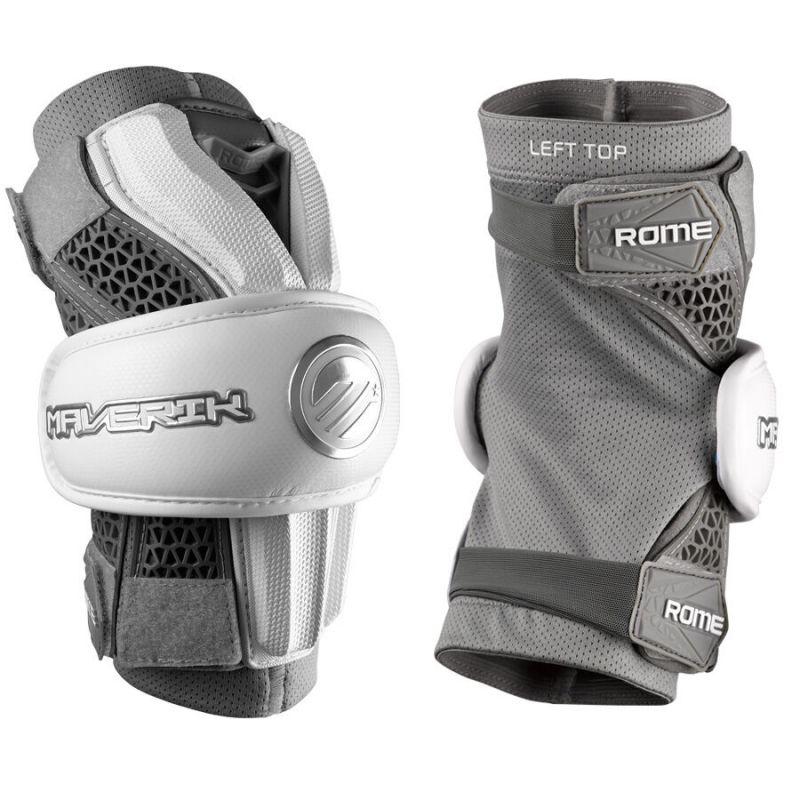
Finding lacrosse arm pads optimized for breathability and moisture management is a key factor for comfort. During intense games and practices, your arms and pads will sweat profusely inside your gear. Sweat-soaked pads can chafe, irritate skin, and weigh you down over time. Prioritize arm pads constructed with lightweight, breathable fabrics that allow airflow to your arms. Moisture wicking liners will also pull sweat away from your skin to keep you drier.
Mesh ventilation zones, perforations, and padded underlays boost airflow as well. This breathability prevents overheating and allows evaporative cooling effects. Look for pads with antimicrobial treatments to inhibit odor-causing bacteria from sweat residue. Removable and washable liner sleeves will make cleaning pads simpler after sweaty games.
Beyond breathable fabrics, some design factors also enhance on-field airflow. Opt for low-profile pad constructions over bulky, restrictive pads to encourage ventilation. Articulated pad segments and flexible joints between hard shells allow better air circulation also. The more compressed and constricted your arms feel, the more you’ll overheat. Proper airflow will keep your arms and pads cooler and drier for optimal comfort during intense lacrosse games anywhere in any climate.
Get the Right Pad Thickness for Your Needs
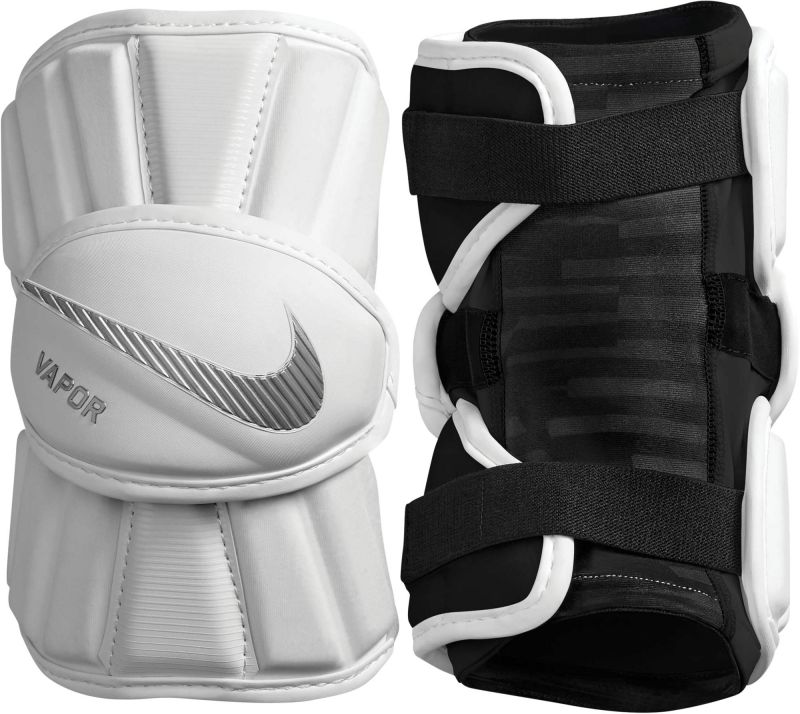
The thickness of lacrosse arm pad padding requires careful consideration when shopping for protection. Thicker pads with maximum shock-absorbing foam will provide superior protection from checks and slashes. However, all that bulk can hamper mobility for stick handling, passing, and shooting. The ideal thickness balances protection and performance.
For goalies, thicker padding is crucial since they can’t shield with their stick. Look for pads with 1/2 to 3/4 inch padding over key impact zones like wrists, forearms and elbows. Field players need less bulk for better dexterity. Pads with 1/4 to 1/2 inch padding still offer adequate protection without excessive restrictions. Necessary thickness also depends on your position and style of play.
More aggressive defensive players who play physically benefit from extra padding girth to withstand cross checks. Faster attackmen and midfielders favor lower profile padding that allows quicker movement and release on shots. Consider removable padding layers or adjustable sleeve lengths to customize thickness as needed for different games and opponents.
Try pads on with full gear to gauge feel during actual play. Shooting and cradling motions will help determine if pads are too bulky. While added thickness boosts protection, ultra-thick pads could do more harm than good by limiting your mobility. Finding your ideal lacrosse arm pad thickness brings the perfect balance of safety and performance.
Evaluate Hard Shells vs Soft Shells
The exterior shell material of lacrosse arm pads is an important factor to evaluate for protection and functionality. Pads feature either rigid plastic covers or softer flexible shells over key impact zones. Hard plastic elbow caps provide superior impact dispersion and absorption for direct hits. High-density plastic shells won’t crack or shatter from repeated intense collisions. However, some disadvantages do exist.
Hard shells can feel bulky and restrictive, limiting your mobility. They also don’t conform well to arm movements compared to softer materials. For field players who need more dexterity, soft-shell pads offer better flexibility and feel. Advanced flexible materials provide robust protection from slashes without the stiffness of plastic. Foam or textile shells allow pads to move more freely with the arms.
Consider your position and needs when choosing between hard and soft exterior shells. Goalies rely on rigid shields to withstand close-range saves. Defenders benefit from the durability of hardy plastic guards as well. Midfielders and attackmen may prefer softer coverings for quicker release and handling. Many pads combine aspects of both with plastic caps over the elbows but softer shells over forearms for balanced protection and mobility. Try out pads with different shell types to determine your ideal lacrosse arm pads.
Find Secure and Adjustable Straps
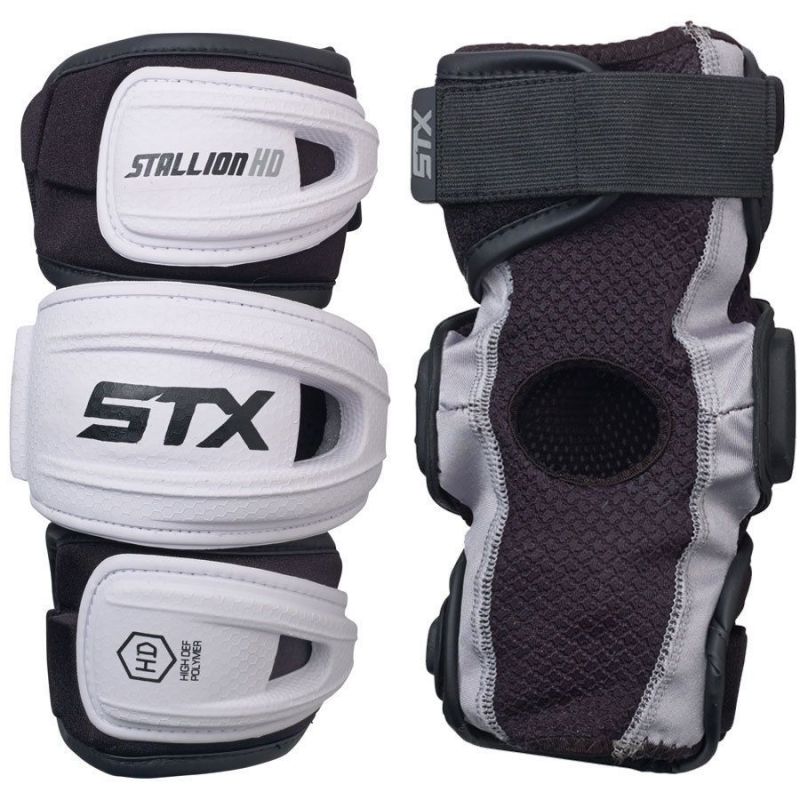
The strapping system on lacrosse arm pads plays a key role in getting an adjustable, customized fit. Loose arm pads that shift and slide during play won’t provide adequate protection. Pads that are too tight can restrict circulation and mobility. Look for pads with multiple straps that allow you to control the compression on different parts of your arm. Many pads feature bicep, forearm, and wrist straps to distribute tightness and prevent pad rotation.
Velcro and non-slip silicone grips make straps simple to tighten or loosen with a good degree of adjustability. This allows you to tweak the fit from game to game based on your needs and comfort level. Straps placed at different angles will also help the pads contour better to your arm shape for a more anatomical wrap.
For midfielders who need mobility, keep straps relatively looser. Defensive players may want added tightness and security to withstand checks. Goalies rely on tight pad compression to seal gaps that balls could squeeze through. Try experimenting with the straps during sizing to address any pressure points before purchasing. With customizable, non-slip arm pad straps you can achieve the ideal secure fit for any lacrosse position or playing style.
Check for Lightweight Yet Durable Materials
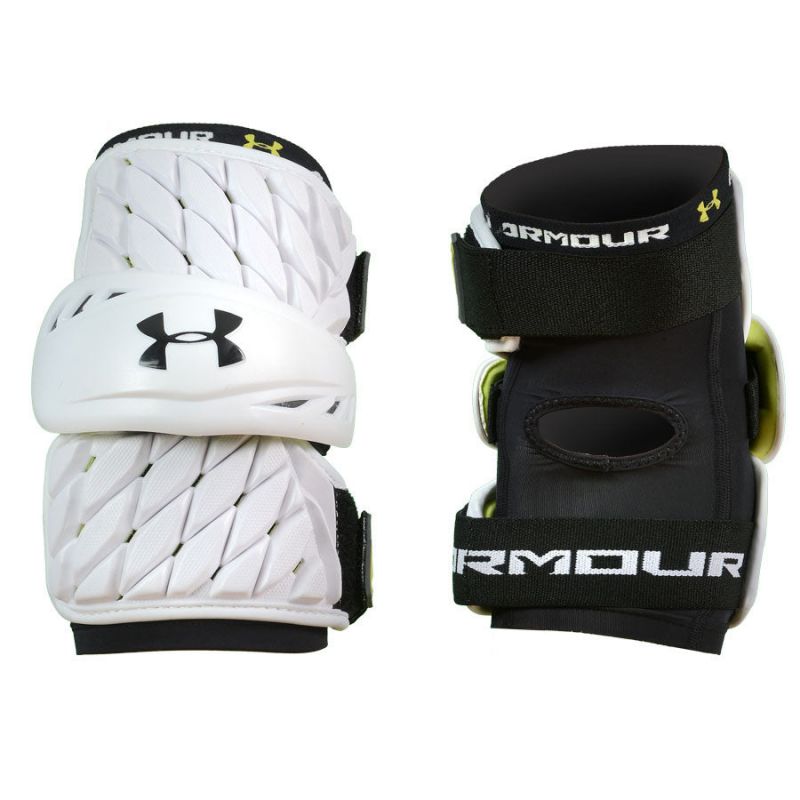
The materials used in lacrosse arm pad construction should optimize both lightweight flexibility and rugged durability. As a high-intensity contact sport, pads need to withstand routine slashing, hacking, and collisions. Yet excess weight and bulk hamper mobility for cradling, passing, and quick reactions. Newer pads feature advanced engineered materials that provide robust protection without unnecessary ounces.
Look for pads incorporating high-grade plastics like injection molded TPU shells over the elbows. This material disperses impact while retaining flexibility. Breathable compressed EVA or foam padding absorbs shock without excessive bulk. For exterior coverings, durable woven polyester mesh promotes ventilation to keep pads light and dry. Internal liner materials like perforated neoprene wick moisture and resist odor buildup.
Hardware such as buckles, rivets, and adjustable straps should withstand the rigors of gameplay without rusting, cracking, or breaking. Evaluate the stitching and seam quality as well for structural integrity. Try checking online gear forums or reviews to identify lacrosse arm pads praised for their durability. While you want your pads light and low-profile, they still need to hold up over repeated hard hits. Prioritizing the right materials will keep your pads protective yet functional through many seasons of play.
Compare Single-Piece vs Multi-Piece Designs
Lacrosse arm pads come in two main design configurations – single-piece units or multi-segment components. Each offers different benefits to consider. Single-piece pads integrate all the protective elements – elbow caps, forearm guards, and wrist cuffs – into one unified pad. This seamless construction provides comprehensive coverage and helps prevent gaps in protection. However, single-piece units can sometimes impair mobility with their bulky, restrictive feel.
Multi-segment pads feature separate detachable components like removable elbow caps and forearm sleeves. This modular design allows you to customize protection and replace parts as needed. Mixing and matching pad pieces gives more flexibility to address your needs. For example, midfielders can attach lightweight forearm guards for speed but beefier elbow caps for added protection when facing aggressive defenders. If a section breaks or wears down, simply swap in a replacement part instead of buying whole new pads.
On the downside, multi-segment pads may shift more during intense play if not secured properly. Evaluate your position and playing style when selecting between unified or modular lacrosse arm pads. Goalies and defenders may favor sturdy single-piece pads, while midfielders and attackmen benefit more from the adaptability of multi-segment gear. Try both styles to see which provides the ideal balance of protection, mobility and adjustability for you.
Research Brand Reputations and Quality
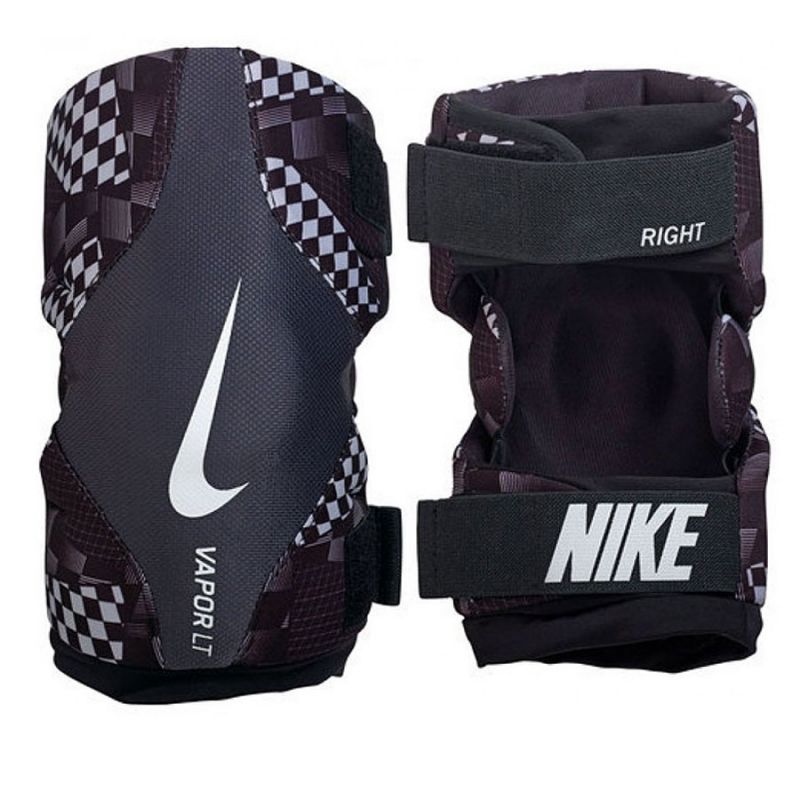
When shopping for lacrosse arm pads, take the time to research different brand reputations for quality, durability, and performance. Major manufacturers like Maverik, STX, and Warrior dominate the lacrosse gear market with advanced pad engineering and technologies. Their high-end pad models provide elite-level protection and mobility, but also come at premium prices.
More budget-friendly brands like Brine and Under Armour offer solid pad options with key features without breaking the bank. Smaller niche companies also craft specialized pads for particular positions and needs. Beyond brands, look into product-specific reviews and feedback from other players.
Online lacrosse forums contain first-hand accounts of how well particular pads stand up to game abuse. You can learn about potential comfort issues, sizing quirks, and durability over time. Be wary of brands without much reputation data or player verification.
When possible, try on pads from different brands to assess fit and feel for your needs. While price often correlates to quality, focus on value over cost alone. With research into the market’s top arm pad producers, you can identify options offering optimal protection, mobility, and longevity no matter your budget.
Consider Custom Designs for Unique Needs

Beyond the retail pad market, getting custom lacrosse arm pads tailored to your proportions and preferences is an option to explore. Custom pads allow you to select specialized materials, thicknesses, strapping configurations, and sizing to create your ideal pads. Many high-end brands now offer full custom ordering through their websites or reps.
Provide your arm measurements and dimension needs to receive one-of-a-kind pads formed to match your body. Tweak details like elbow cap shape, forearm padding amount, moisture-wicking fabrics, and trim aesthetics to optimize fit and functionality. Place protective elements exactly where you want enhanced shielding from checks and slashes.
Downsides of custom pads include the high cost and wait times up to several weeks to manufacture. However, the benefits may outweigh the negatives for players with unique sizing issues or who play hard at elite levels. Custom arm pads spread impact forces evenly across your arms for less risk of injury over time. Dialing in the perfect pads tailored to your game can give a performance edge and peace of mind.
Shop Clearance Sections for Deals
Searching for lacrosse arm pad deals in retailer clearance sections can help you save money. Brands frequently release new pad models each year with updated features or aesthetics. Retailers then mark down older versions to make room for new inventory. This creates opportunities to score quality pads at reduced prices simply due to changing product cycles.
Closeout sales on last year’s pads often discount prices 30% to 50% or more. As long as the materials and technology are not truly outdated, you can get near top-tier protection for under $100 in some cases. Clearance sections are also worth browsing for uncommon sizes that may have extra stock still available as well.
When evaluating marked down pads, inspect for any defects and try them on for proper fit. Make sure any plastic shells are not already cracked or warped. Check that straps, buckles and velcro still fasten securely with no signs of wear. While you likely won’t find your ideal custom pads on clearance, you can potentially mix and match bargain pieces to create effective hybrid protection. With smart shopping at the right times, clearing out clearance lacrosse pads can keep you safely covered on a budget.
Read Online Reviews Before Buying
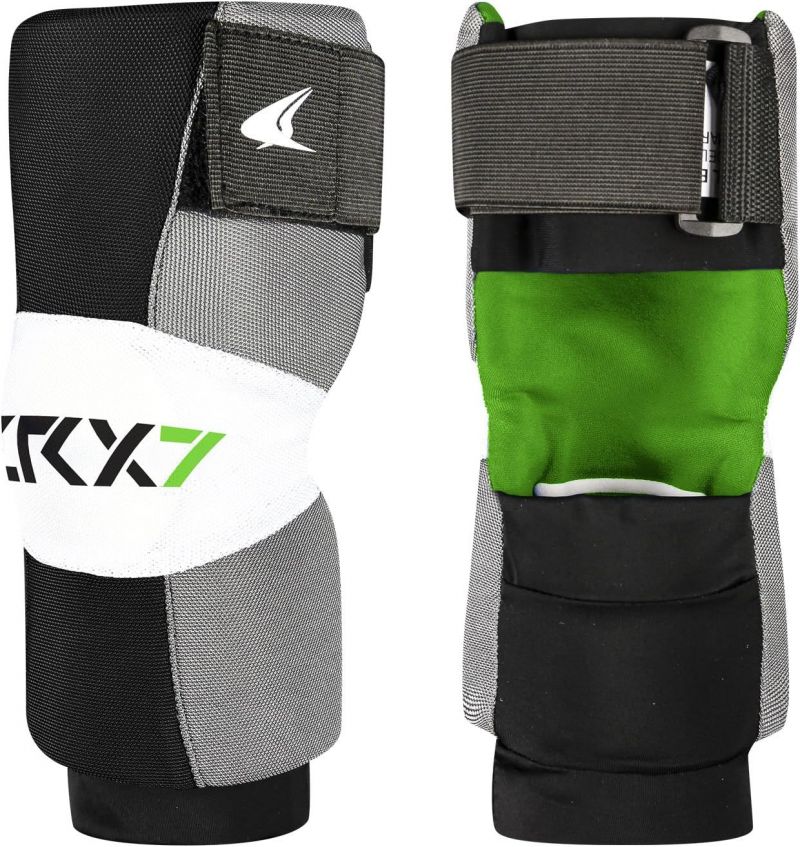
Reading lacrosse equipment reviews online before purchasing new arm pads is highly recommended. Product websites, forums, blogs, YouTube channels, and retail sites like Amazon contain a wealth of pad feedback. Athlete product reviews provide transparent, detailed accounts of how pads perform in real gameplay. Look for insights into protection, comfort, durability, sizing, mobility, and value across price ranges.
Sort reviews by recency and relevance as models change over time. Watch video reviews that showcase pad features up close during demonstrations. Pay attention to common pros and cons mentioned across multiple sources for the most pertinent details. Be aware that some online reviews may be paid promotions, so balance with independent user opinions.
Leverage reviews to compile your own shortlist of pad models that fit your needs. You can crosscheck specs and narrow choices rather than blindly buying pads that may not suit your game. Watch for potential fit issues called out if you are on the smaller or larger size end. Customer images also give sizing reference. While reviews should not replace trying pads yourself, they allow more informed purchasing decisions.
Consult Your Coach for Guidance
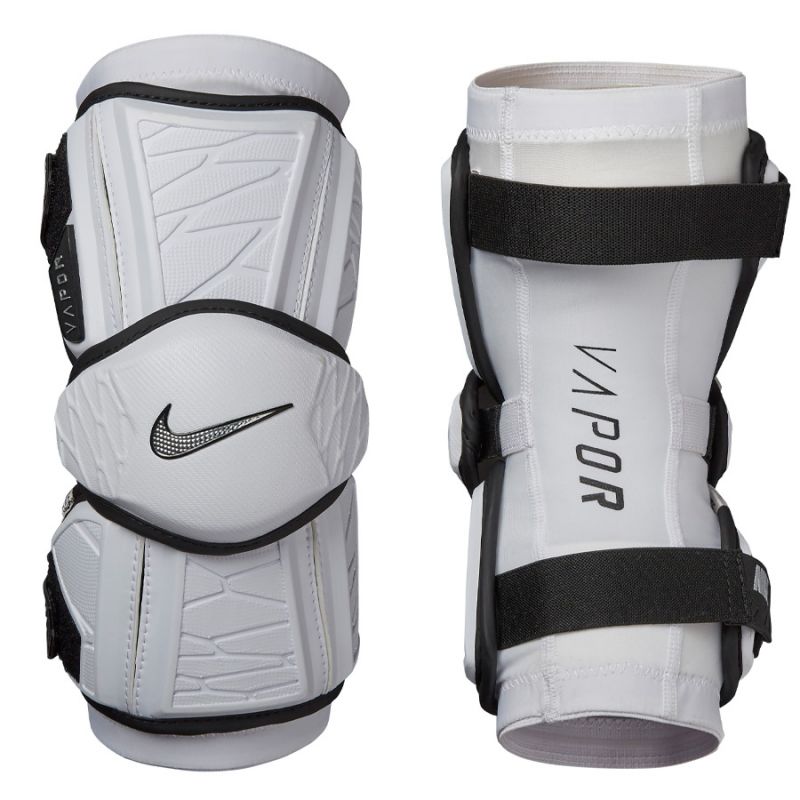
When selecting new lacrosse arm pads, don’t overlook getting input from your coach as well. Experienced coaches have observed how different pad types perform across various players and positions. They can provide position-specific recommendations based on your abilities, play style, and team needs. A coach may advise bulking up on protection if you play aggressively but leaner pads for finesse players.
Your coach can also evaluate your current pads to check for proper coverage and responsiveness. Keep them updated on any chronic pad issues like slipping, gaps, or discomfort during play. They may notice certain pad limitations you have not. Some coaches even coordinate team pad colors and styles.
While you want to control your own pad preferences, a coach’s perspective offers an outside performance assessment. They know how pads can help maximize your talents or get in the way on the field. Respect their many hours analyzing gear effectiveness in game situations. Off-season training may allow more flexibility to test alternative pads. But for game days, consider the coach’s guidance on lacrosse arm pad selection when taking the field to win.